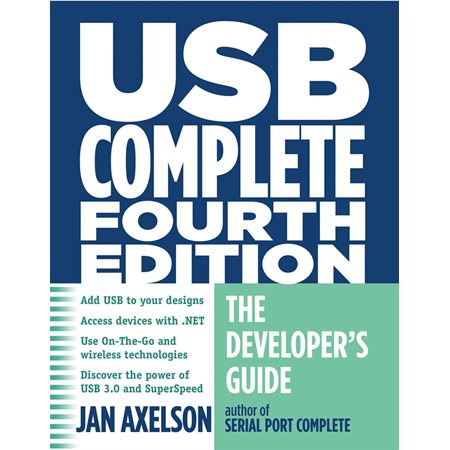Now in its fourth edition, this developer's guide to the Universal Serial Bus (USB) interface covers all aspects of project development, such as hardware design, device firmware, and host application software. Topics include how to choose a device controller chip, cut development time by using USB classes, and write software to access devices that perform vendor-specific functions. Example codes are provided using Visual Basic .NET and Visual C# .NET for performing tasks such as detecting device arrival and removal and transferring vendor-defined data using the human interface device class. This newest edition has updated information on controller chips, USB classes, power use, and Microsoft’s WinUSB driver.
Now in its fourth edition, this developer's guide to the Universal Serial Bus (USB) interface covers all aspects of project development, such as hardware design, device firmware, and host application software. Topics include how to choose a device controller chip, cut development time by using USB classes, and write software to access devices that perform vendor-specific functions. Example codes are provided using Visual Basic .NET and Visual C# .NET for performing tasks such as detecting device arrival and removal and transferring vendor-defined data using the human interface device class. This newest edition has updated information on controller chips, USB classes, power use, and Microsoft’s WinUSB driver.
